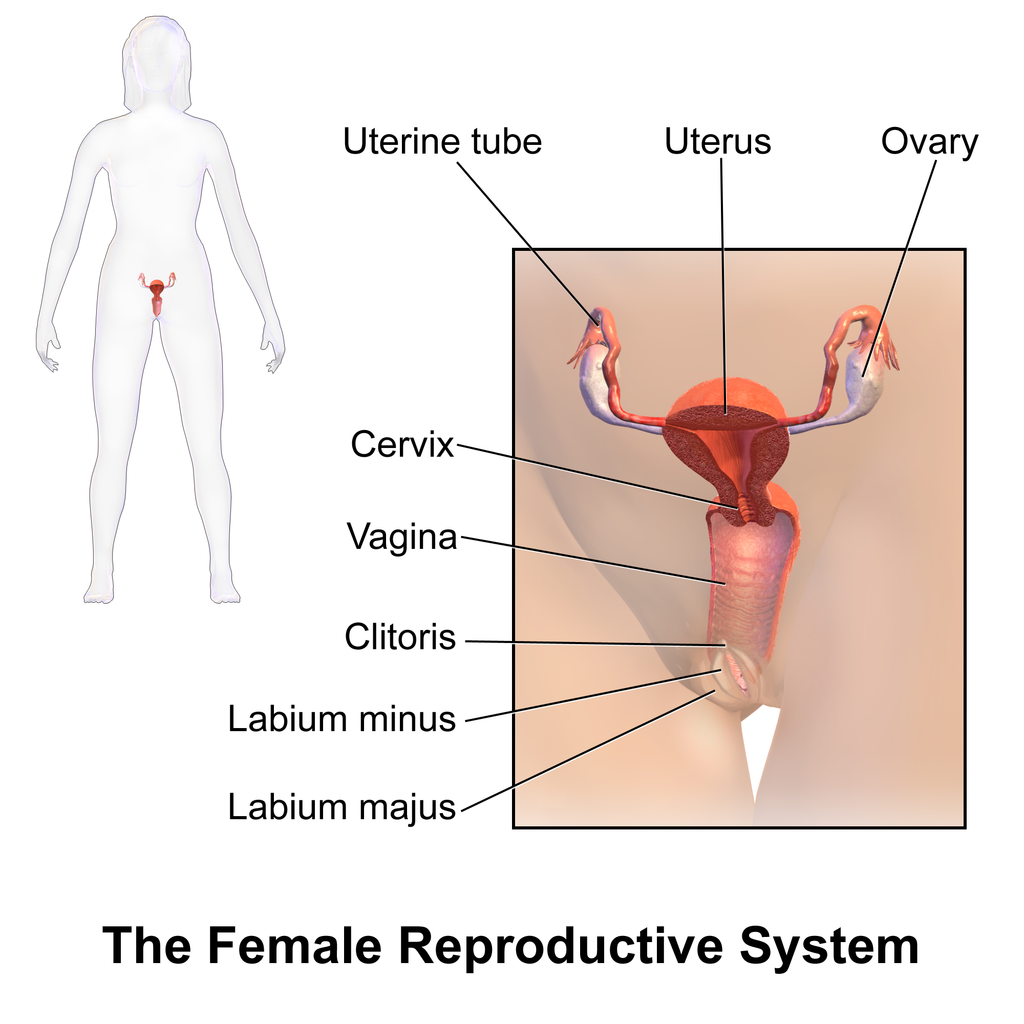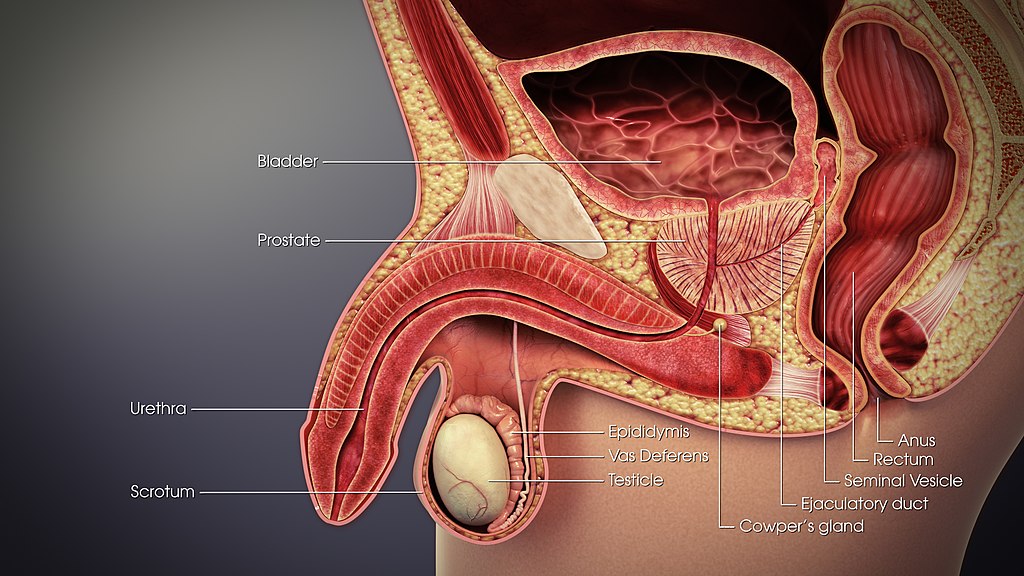11.11 Reproductive System
Reproduction is the process by which organisms make more organisms like themselves. Although the reproductive system is essential to keeping a species alive, unlike other body systems, it’s not essential to keeping an individual alive. Because the endocrine system controls the hormone levels throughout the body, it has a large role in the functioning of the reproductive system. Hormone levels affect growth and development, appetite, mood, body temperature, and stress, along with sexual function and reproductive health. Both the male and female reproductive systems are necessary to reproduce. The organs that are part of both reproductive systems are referred to as genitals.[1]
Female Reproductive System
The external part of the female reproductive organs is called the vulva, which covers the opening to the vagina and other internal reproductive organs. Two pairs of skin flaps called the labia surround the vaginal opening. The clitoris, a small sensory organ, is located toward the front of the vulva where the folds of the labia join. Between the labia are openings to the urethra and vagina. When girls become sexually mature, called puberty, the outer labia and the mons pubis are covered by pubic hair. A female’s internal reproductive organs are the vagina, uterus, Fallopian tubes, and ovaries. See Figure 11.16[2] for an illustration of the organs of the female reproductive system.

Toward the end of puberty, girls begin to release eggs as part of a monthly period called the menstrual cycle. About once a month, during ovulation, an ovary sends an egg into one of the Fallopian tubes. Unless the egg is fertilized by a male’s sperm while in the Fallopian tube, the egg leaves the body about two weeks later through the uterus in a process called menstruation. During menstruation, blood and tissues from the inner lining of the uterus combine to form the menstrual flow, which in most women lasts from three to five days.[3]
The menstrual cycle continues until menopause, when levels of estrogen decline and the woman no longer releases eggs. This usually occurs sometime around the late forties to early fifties. As estrogen levels decrease, women may experience irregular periods, hot flashes, night sweats, mood swings, and changes in metabolism.[4]
Male Reproductive System
The external male genitals are the penis and scrotum. The urethra runs from the bladder through the penis to expel urine externally. Internally, the male reproductive system includes the testes, the duct system made up of the epididymis and the vas deferens, and the accessory glands that include the seminal vesicles and prostate gland. Testosterone is a hormone that increases during puberty and is produced in the testes. Testosterone is responsible for causing boys to develop deeper voices, larger muscles, and body and facial hair. It also stimulates the production of sperm that fertilizes the egg of a female.[5] See Figure 11.17[6] for an illustration of the male reproductive system.

All males are born with a foreskin, a fold of skin at the end of the penis. Some boys are circumcised, which means that a doctor or a clergy member cuts away the foreskin. Circumcision is typically performed during a baby’s first few days of life based on parental religious beliefs, concerns about hygiene, or cultural or social reasons. There is no medical necessity for circumcision.
As men age, their prostate enlarges. Because the prostate surrounds the urethra, its enlargement often causes urinary issues such as the decreased ability to dispel urine, frequent urination, an intermittent stream of urine, and retention of urine in the bladder. Urinary retention and incomplete emptying of urine from the bladder increase the male resident’s risk of urinary tract infections, so signs of infection should be monitored by nursing assistants.
- Hirsch, L. (2019, June). Female reproductive system. KidsHealth. https://kidshealth.org/en/teens/female-repro.html ↵
- "Blausen_0399_FemaleReproSystem_01.png" by Blausen.com staff (2014) at "Medical gallery of Blausen Medical 2014 is licensed under CC BY 3.0 ↵
- Hirsch, L. (2019, June). Female reproductive system. KidsHealth. https://kidshealth.org/en/teens/female-repro.html ↵
- Hirsch, L. (2019, June). Female reproductive system. KidsHealth. https://kidshealth.org/en/teens/female-repro.html ↵
- Hirsch, L. (2019, June). Male reproductive system. KidsHealth. https://kidshealth.org/en/teens/male-repro.html ↵
- "3D_Medical_Animation_Vas_Deferens.jpg" by https://www.scientificanimations.com is licensed under CC BY-SA 4.0 ↵
Toward the end of puberty, girls begin to release eggs as part of a monthly period in a process known as the menstrual cycle.
Blood and tissues from the inner lining of the uterus combine to form the menstrual flow, which in most women lasts from three to five days.

